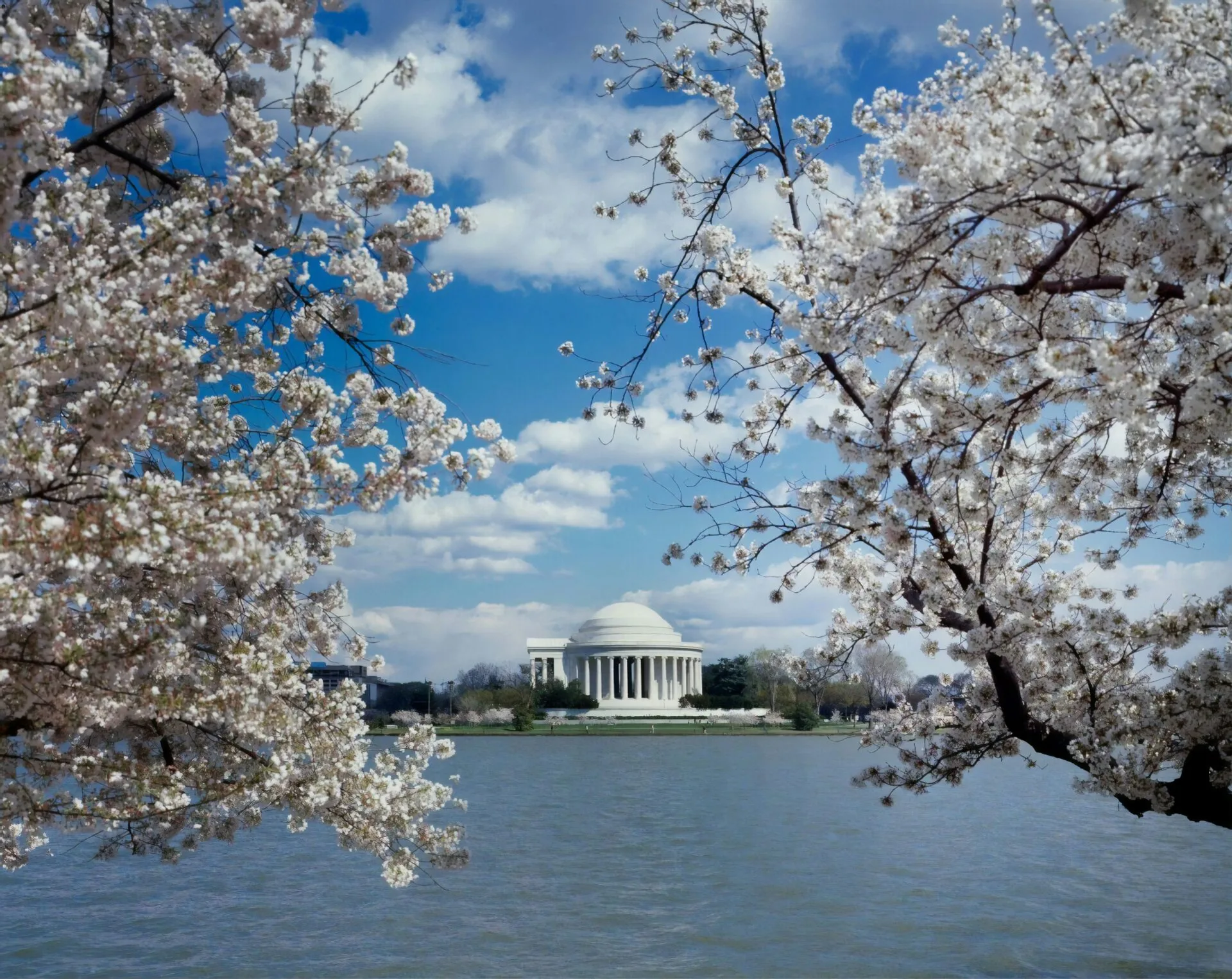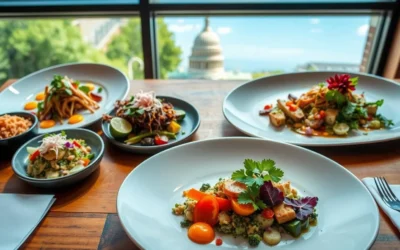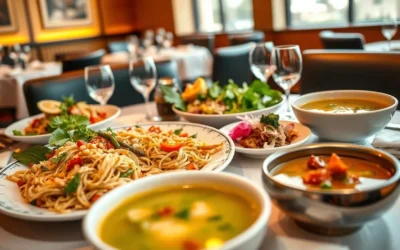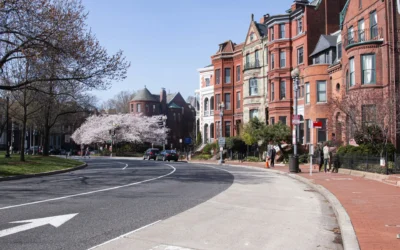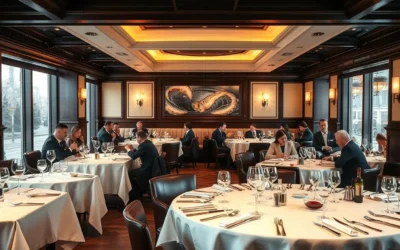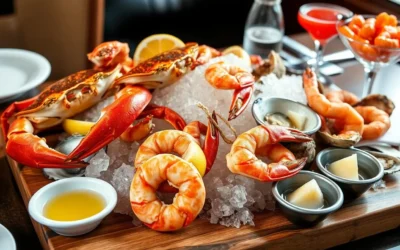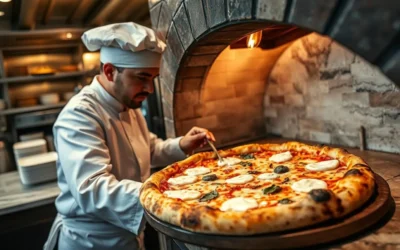Did you know that Washington DC’s museums house over 154 million artifacts, artworks, and specimens, with the Smithsonian Institution alone accounting for 137 million of these treasures? Even more impressive, most of these world-class museums offer free admission, making DC one of the most culturally accessible capitals in the world. With such an abundance of history, art, and culture concentrated in one city, planning the perfect Washington DC 3-day itinerary requires strategic thinking to make the most of your time.
Planning Your 3-Day Washington DC Adventure
Washington DC packs an incredible amount of American history, political significance, and cultural richness into its relatively compact area. With just three days to explore, you’ll want to balance must-see attractions with hidden gems while avoiding tourist burnout. This carefully crafted Washington DC 3-day itinerary will help you experience the best of the nation’s capital efficiently.
Before diving into the day-by-day plan, let’s cover some essential information to help you prepare for your trip. From transportation options to seasonal considerations, these details will ensure your visit runs smoothly.
Ready to Book Your Washington DC Adventure?
Start planning your perfect trip to the nation’s capital with these essential travel services.
Best Time to Visit Washington DC
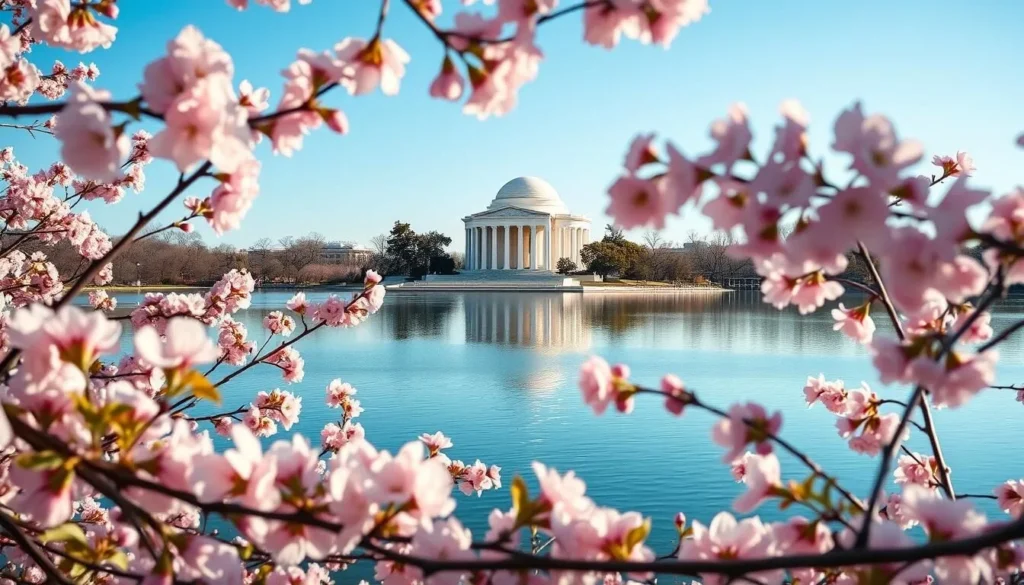
Washington DC experiences four distinct seasons, each offering a unique perspective on the city:
Spring (March-May)
Spring brings the famous Cherry Blossom Festival (late March to early April), when thousands of cherry trees burst into delicate pink blooms around the Tidal Basin. While this period offers spectacular scenery, it’s also the most crowded and expensive time to visit. Book accommodations months in advance if planning a spring trip.
Fall (September-November)
Fall offers pleasant temperatures, beautiful foliage in parks, and fewer crowds than spring or summer. September and October provide ideal weather for exploring outdoor monuments and walking between attractions. This shoulder season also offers better hotel rates than peak periods.
Summer (June-August)
Summer brings hot, humid weather with temperatures regularly exceeding 90°F (32°C). While this is peak tourist season due to school vacations, the heat can make extensive walking uncomfortable. Summer visitors should plan indoor museum visits during midday heat and outdoor explorations for mornings and evenings.
Winter (December-February)
Winter offers the lowest hotel rates and smallest crowds, though occasional snowfall and cold temperatures can impact outdoor sightseeing. Many attractions operate on reduced winter hours, but the major museums and monuments remain open. The city looks particularly magical when dusted with snow.
Getting to Washington DC
By Air
Washington DC is served by three major airports:
- Ronald Reagan Washington National Airport (DCA) – Located just across the Potomac River in Arlington, this is the closest airport to downtown DC and connects directly to the Metro system.
- Washington Dulles International Airport (IAD) – Located 26 miles west of the city in Virginia, Dulles handles most international flights. The Silver Line Metro extension now connects Dulles to downtown DC.
- Baltimore/Washington International Thurgood Marshall Airport (BWI) – Located 35 miles northeast of DC in Maryland, BWI often offers competitive fares and connects to DC via MARC train or Amtrak.
By Train
Amtrak serves Washington’s Union Station with connections throughout the Northeast Corridor and beyond. The high-speed Acela service connects DC to Boston, New York, and Philadelphia.
By Car
Major highways including I-95, I-66, and I-270 lead into Washington DC. However, driving in the city can be challenging due to traffic and limited parking. Consider parking at a Metro station outside the city and using public transportation to get around.
Find the Best Flight Deals to Washington DC
Compare prices across airlines and book your tickets to start your DC adventure.
Getting Around Washington DC
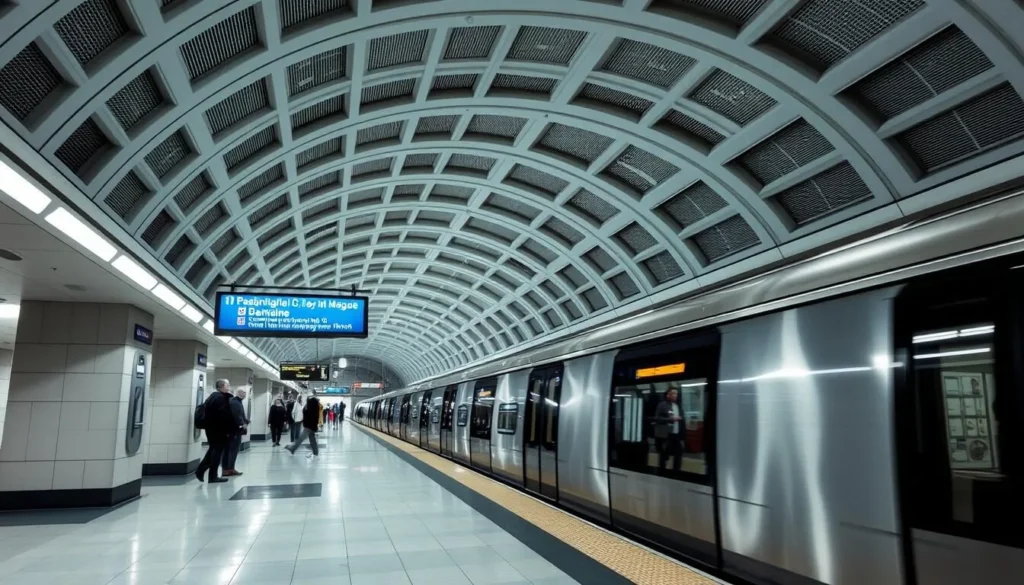
Washington DC offers excellent public transportation options, making it easy to navigate without a car:
Metro
The Washington Metropolitan Area Transit Authority (WMATA) operates an extensive subway system that connects all major attractions. Purchase a reloadable SmarTrip card for the best rates. The Metro operates from 5:00 AM to 11:00 PM on weekdays and 7:00 AM to 11:00 PM on weekends.
Bus
WMATA also runs an extensive bus network that reaches areas not served by Metro. The DC Circulator buses are particularly useful for tourists, offering $1 rides on routes connecting major attractions and neighborhoods.
Capital Bikeshare
With over 500 stations throughout the DC area, Capital Bikeshare offers a healthy and scenic way to explore. Single trips, 24-hour passes, and 3-day passes are available, making this perfect for visitors following a Washington DC 3-day itinerary.
Walking
The National Mall and downtown areas are highly walkable. Many major attractions are clustered within a relatively compact area, making walking both practical and enjoyable, especially in spring and fall.
Need a Rental Car for Your DC Trip?
While public transportation is excellent in DC, a rental car gives you freedom to explore beyond the city limits.
Where to Stay in Washington DC
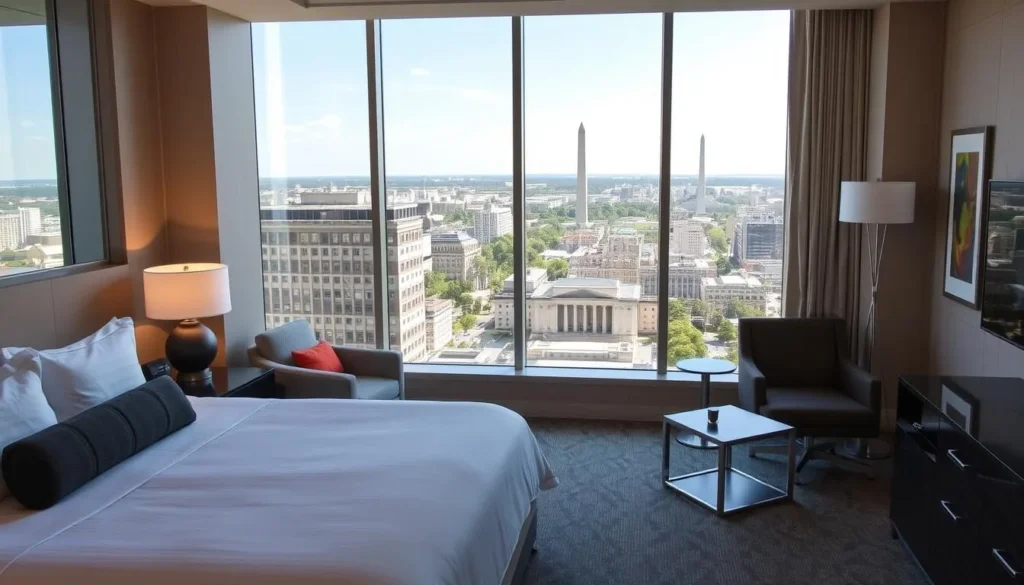
Choosing the right neighborhood for your stay can significantly impact your Washington DC experience. Here are the best areas to consider:
Downtown/Penn Quarter
Staying in Downtown or Penn Quarter puts you within walking distance of the National Mall, Smithsonian museums, and major monuments. This central location is ideal for first-time visitors who want to maximize sightseeing time. The area offers numerous hotels across all price points, though budget options are limited.
Georgetown
This historic neighborhood offers charming cobblestone streets, Federal-style architecture, and excellent shopping and dining. While Georgetown lacks direct Metro access, it’s connected to downtown by frequent buses. The area features several luxury hotels and boutique accommodations with distinctive character.
Dupont Circle
Known for its vibrant atmosphere, Dupont Circle offers excellent restaurants, cafes, and nightlife. The neighborhood is well-connected by Metro and provides a more local experience than staying downtown. Accommodation options range from international hotel chains to charming bed and breakfasts.
Find Your Perfect DC Accommodation
Browse hotels, apartments, and vacation rentals in Washington DC’s best neighborhoods.
Day 1: National Mall and Monuments
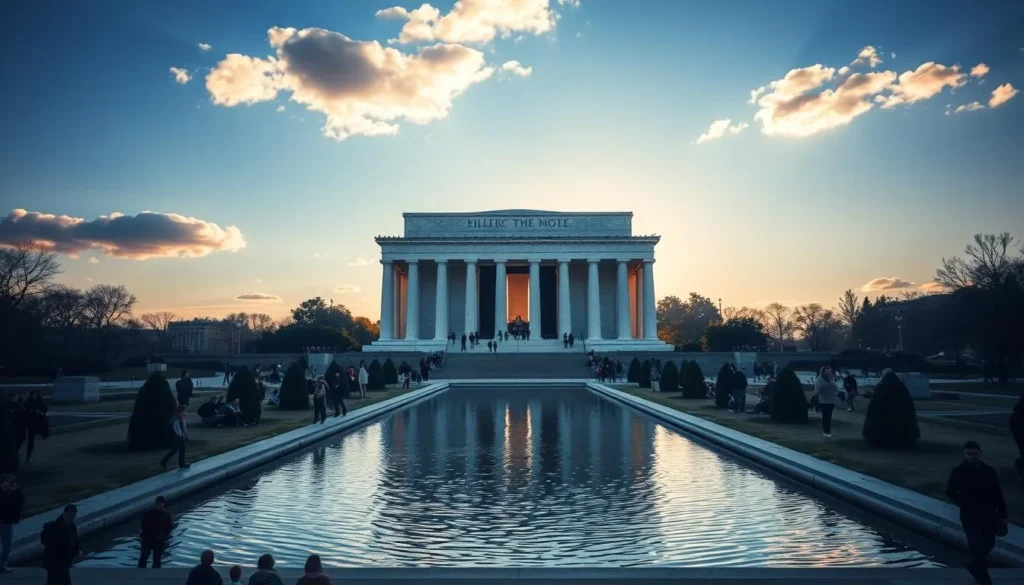
Your first day in Washington DC focuses on the iconic National Mall, home to the city’s most recognizable monuments and memorials. This expansive green space stretches from the Capitol Building to the Lincoln Memorial and houses many of the Smithsonian museums.
Morning: Begin at the Capitol
Start your day early at the eastern end of the National Mall with a visit to the U.S. Capitol Building. While interior tours require advance reservations through your congressional representative, the visitor center offers exhibits about the legislative branch. From here, enjoy the panoramic view down the National Mall, with the Washington Monument rising in the distance.
Next, visit the Library of Congress, housed in the stunning Thomas Jefferson Building. The ornate Great Hall and Main Reading Room showcase some of the finest architecture in the city. If time permits, stop by the Supreme Court building, where you can attend a lecture about the judicial branch when the court is not in session.
Midday: Smithsonian Museums
The National Mall houses multiple Smithsonian museums, all offering free admission. With limited time, focus on one or two that align with your interests:
- National Air and Space Museum – Houses the world’s largest collection of historic aircraft and spacecraft, including the Wright brothers’ flyer and Apollo lunar modules.
- National Museum of Natural History – Features the Hope Diamond, dinosaur fossils, and extensive exhibits on human origins and ocean life.
- National Museum of American History – Displays iconic American artifacts including the Star-Spangled Banner and Dorothy’s ruby slippers from The Wizard of Oz.
- National Museum of African American History and Culture – Chronicles the African American experience from slavery through the present day (requires timed-entry passes).
Afternoon: Washington Monument and War Memorials
After lunch at one of the museum cafes, head to the Washington Monument. If you’ve secured advance tickets, ride the elevator to the observation deck for panoramic views of the city. Continue westward to visit the solemn and moving war memorials:
- World War II Memorial – An impressive circular monument with fountains and pillars representing each state
- Vietnam Veterans Memorial – The powerful black granite wall inscribed with the names of over 58,000 Americans who died in the conflict
- Korean War Veterans Memorial – Features stainless steel statues of soldiers on patrol
Evening: Lincoln Memorial and Tidal Basin
As daylight begins to fade, visit the majestic Lincoln Memorial. Climb the steps to see the 19-foot marble statue of Abraham Lincoln and read his immortal words from the Gettysburg Address and Second Inaugural Address inscribed on the walls. The view back across the Reflecting Pool toward the Washington Monument is particularly stunning at sunset.
If energy permits, walk around the Tidal Basin to visit the Martin Luther King Jr. Memorial and the Thomas Jefferson Memorial. These monuments are beautifully illuminated after dark, offering a different perspective from daytime visits.
Enhance Your Monument Experience
Consider a guided tour to gain deeper insights into DC’s iconic monuments and memorials.
Day 2: Museums and Cultural Experiences
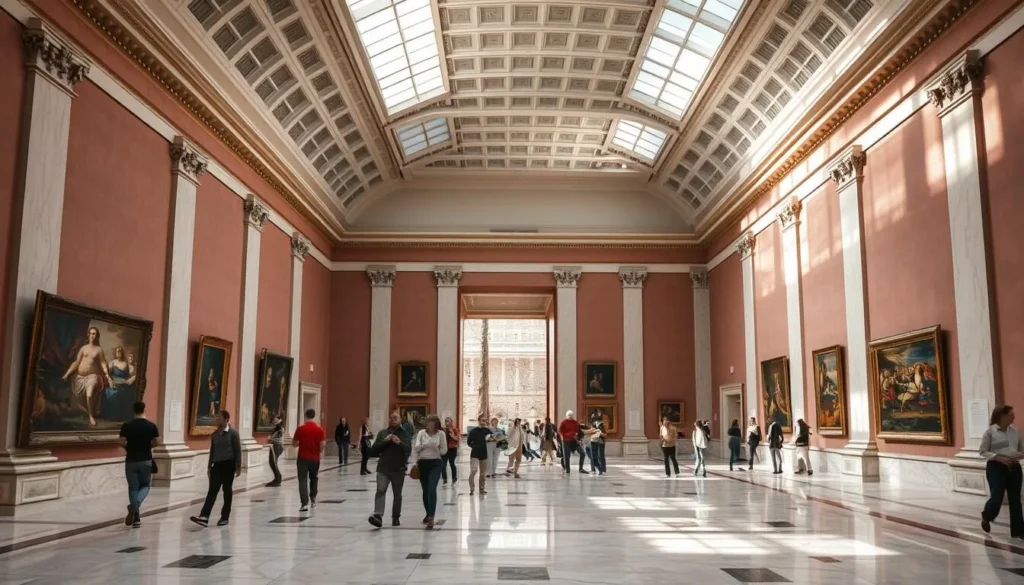
Your second day delves deeper into Washington’s cultural treasures, focusing on world-class museums and historic neighborhoods that showcase the city’s diverse heritage.
Morning: National Gallery of Art
Begin at the National Gallery of Art, which houses one of the world’s finest art collections spanning the Middle Ages to the present. The East Building showcases modern and contemporary art, while the West Building contains European masterpieces including the only Leonardo da Vinci painting in the Americas. Don’t miss the underground concourse connecting the buildings, featuring a moving walkway through a captivating light installation by Leo Villareal.
Midday: National Archives and American Art
Visit the National Archives to see America’s founding documents—the Declaration of Independence, Constitution, and Bill of Rights—displayed in the Rotunda. While photography isn’t permitted, the experience of seeing these historic documents in person is unforgettable.
For lunch, try the Cascade Café at the National Portrait Gallery/American Art Museum, then explore these connected museums housed in the historic Patent Office Building. The National Portrait Gallery features portraits of influential Americans throughout history, while the American Art Museum showcases the nation’s artistic heritage.
Afternoon: Choose Your Interest
Depending on your interests, select one of these fascinating museums for your afternoon exploration:
International Spy Museum
This engaging museum reveals the secrets of espionage through interactive exhibits and the world’s largest collection of spy artifacts. Learn about famous spies, code-breaking techniques, and covert operations throughout history. Unlike the Smithsonian museums, this requires an admission fee.
United States Holocaust Memorial Museum
This powerful museum documents the Holocaust through artifacts, photographs, and personal stories. The permanent exhibition presents a chronological narrative of this tragic chapter in history. Free timed-entry tickets are required during peak season (March-August).
National Museum of the American Indian
Housed in a striking curvilinear building, this Smithsonian museum celebrates the diverse cultures, traditions, and histories of Native Americans. The museum’s architecture, landscape, and exhibitions were designed in collaboration with Native communities.
Evening: Georgetown
Spend your evening exploring Georgetown, Washington’s oldest neighborhood. Begin with a stroll along the C&O Canal towpath, then wander the charming cobblestone streets lined with Federal-style homes. M Street and Wisconsin Avenue offer excellent shopping and dining options, from casual eateries to upscale restaurants.
For dessert, try Georgetown Cupcake or Baked & Wired for a sweet treat before enjoying the waterfront park overlooking the Potomac River. If you’re visiting during warmer months, consider a sunset kayak excursion from the Thompson Boat Center.
Discover DC’s Cultural Treasures
Book specialized tours and skip-the-line tickets to make the most of your museum visits.
Day 3: Beyond the Tourist Trail
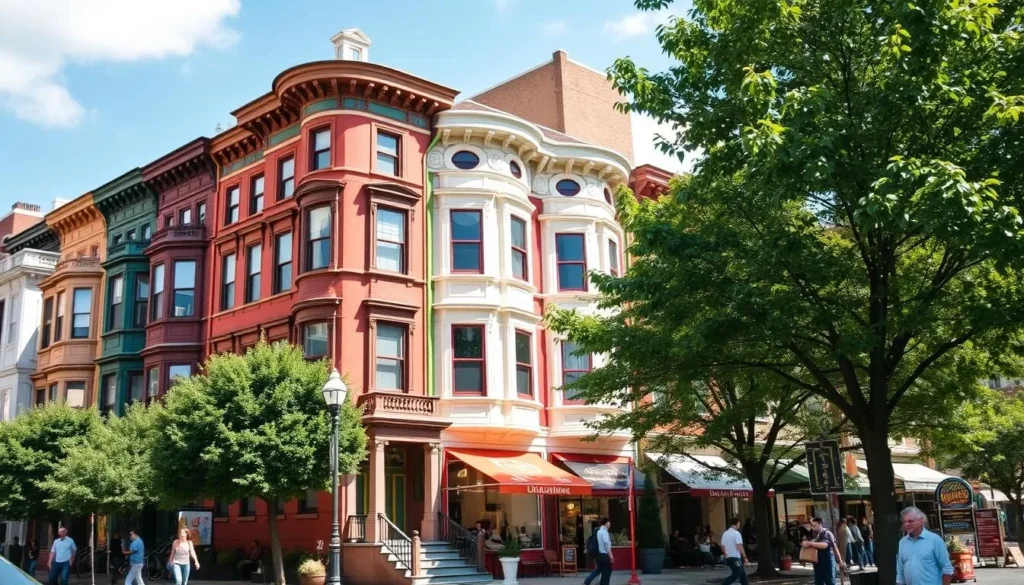
Your final day explores Washington beyond the main tourist attractions, revealing the city’s diverse neighborhoods, local culture, and nearby historic sites.
Morning: Arlington National Cemetery
Cross the Potomac River to visit Arlington National Cemetery, America’s most hallowed ground. Covering 639 acres, this military cemetery contains the graves of more than 400,000 service members, veterans, and their families.
Key sites to visit include:
- The Tomb of the Unknown Soldier, where you can witness the solemn Changing of the Guard ceremony
- President John F. Kennedy’s gravesite with its eternal flame
- Arlington House, the former home of Robert E. Lee
- The Women in Military Service for America Memorial
A tram tour offers an efficient way to see the major sites while providing historical context through narration.
Midday: Neighborhoods and Local Cuisine
Return to DC and explore one of its vibrant neighborhoods for lunch and local culture:
Option 1: U Street and Shaw
Once known as “Black Broadway,” this historic African American neighborhood was home to Duke Ellington and remains a center for music, culture, and cuisine. Visit the African American Civil War Memorial, browse independent shops, and enjoy lunch at one of the area’s many restaurants. Ben’s Chili Bowl, a DC institution since 1958, serves the famous “half-smoke” sausage that’s a local specialty.
Option 2: Eastern Market and Capitol Hill
This historic market has served the Capitol Hill neighborhood since 1873. Inside, vendors sell fresh produce, meats, cheeses, and baked goods, while weekend outdoor markets feature local artisans and antique dealers. After browsing, explore the charming residential streets of Capitol Hill with their colorful row houses and pocket parks.
Afternoon: Choose Your Adventure
For your final afternoon, select one of these engaging options:
The Phillips Collection
America’s first museum of modern art houses an exceptional collection in an intimate setting. Located in Dupont Circle, this museum features works by Renoir, Rothko, O’Keeffe, and many others. The Rothko Room, designed to create a contemplative environment for viewing four of the artist’s paintings, offers a particularly moving experience.
National Cathedral
This magnificent Gothic cathedral took 83 years to complete and features stunning stained glass, intricate stone carvings, and a breathtaking interior. Climb to the tower for panoramic city views, explore the beautiful gardens, and look for the famous “Darth Vader” gargoyle hidden among the traditional carvings.
Theodore Roosevelt Island
This 88-acre wilderness preserve in the Potomac River offers walking trails through diverse habitats and a memorial to the conservation-minded president. The island provides a peaceful natural retreat with surprising wildlife viewing opportunities just minutes from downtown.
Evening: Waterfront and Farewell Dinner
Conclude your Washington DC 3-day itinerary at The Wharf, a revitalized waterfront district offering restaurants, shops, and entertainment. Enjoy dinner at one of the waterfront restaurants with views of the Washington Channel, then take a sunset cruise for a different perspective on the city’s monuments.
Alternatively, visit the Kennedy Center for a performance. The rooftop terrace offers spectacular views of the Potomac River and Georgetown, making it a perfect spot to reflect on your Washington DC experience.
Complete Your DC Experience
Book special experiences for your final day in Washington DC.
Where to Eat in Washington DC
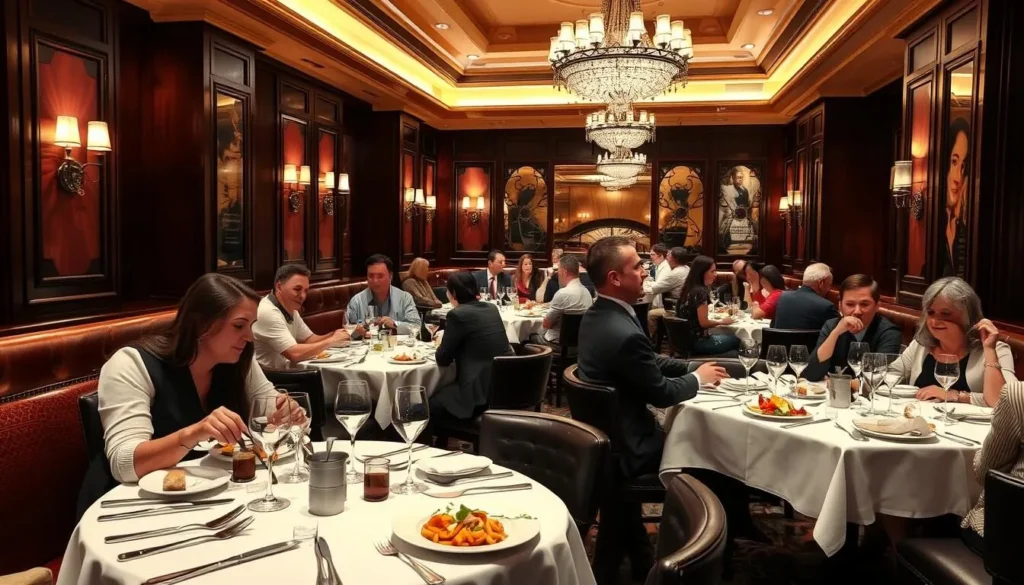
Washington DC has evolved into one of America’s most exciting food cities, offering everything from historic establishments to innovative chef-driven restaurants. Here are some dining highlights to consider during your 3-day visit:
Iconic DC Eateries
- Old Ebbitt Grill – Washington’s oldest restaurant (established 1856) serves American classics near the White House
- Ben’s Chili Bowl – A U Street landmark known for half-smoke sausages and chili
- Martin’s Tavern – Georgetown institution where JFK proposed to Jackie
- Florida Avenue Grill – Soul food staple operating since 1944
Global Cuisine
- Rasika – Award-winning modern Indian cuisine
- Oyamel – Creative Mexican small plates by José Andrés
- Ethiopic – Authentic Ethiopian food on H Street
- Daikaya – Japanese ramen shop and izakaya
- Compass Rose – International street food in a cozy setting
Quick Bites
- Union Market – Food hall featuring diverse vendors
- District Taco – Local chain serving fresh Mexican fare
- Bub and Pop’s – Beloved sandwich shop with hearty options
- &pizza – Fast-casual custom pizza chain born in DC
- Sweet Green – Healthy salads with locally sourced ingredients
For a special dining experience, consider making reservations at one of DC’s Michelin-starred restaurants such as Pineapple and Pearls, Minibar, or The Inn at Little Washington (located about 90 minutes outside the city).
Practical Tips for Your Washington DC Visit
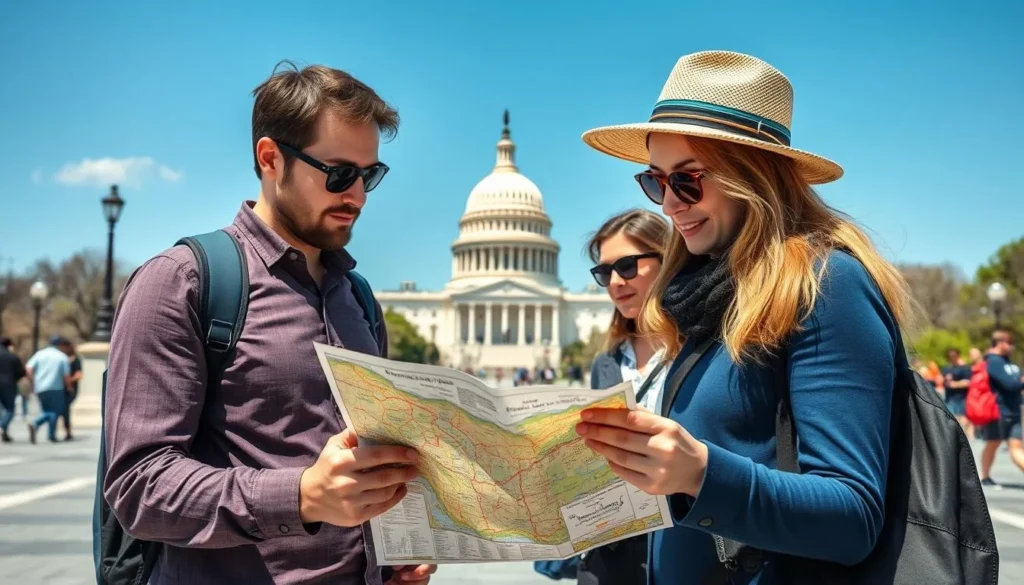
Money-Saving Tips
- Take advantage of free Smithsonian museums and monuments
- Use the Metro during off-peak hours for reduced fares
- Visit the Kennedy Center’s Millennium Stage for free performances at 6 PM daily
- Bring a refillable water bottle to use at public fountains
- Consider a DC Explorer Pass if visiting multiple paid attractions
Safety and Etiquette
- Stand to the right, walk to the left on Metro escalators
- Maintain quiet, respectful behavior at memorials and Arlington Cemetery
- Be aware of your surroundings, especially when using public transportation at night
- Keep valuables secure, particularly in crowded tourist areas
- Expect security screenings at government buildings and some museums
Visitor Essentials
- Wear comfortable walking shoes – you’ll cover a lot of ground
- Bring layers, as museum interiors are often heavily air-conditioned
- Download the Smithsonian Mobile App for maps and information
- Carry photo ID for entry to government buildings
- Book popular attractions and restaurants in advance, especially during peak season
Prepare for Your Washington DC Trip
Book your travel essentials now for a smooth and enjoyable experience.
Seasonal Events and Festivals
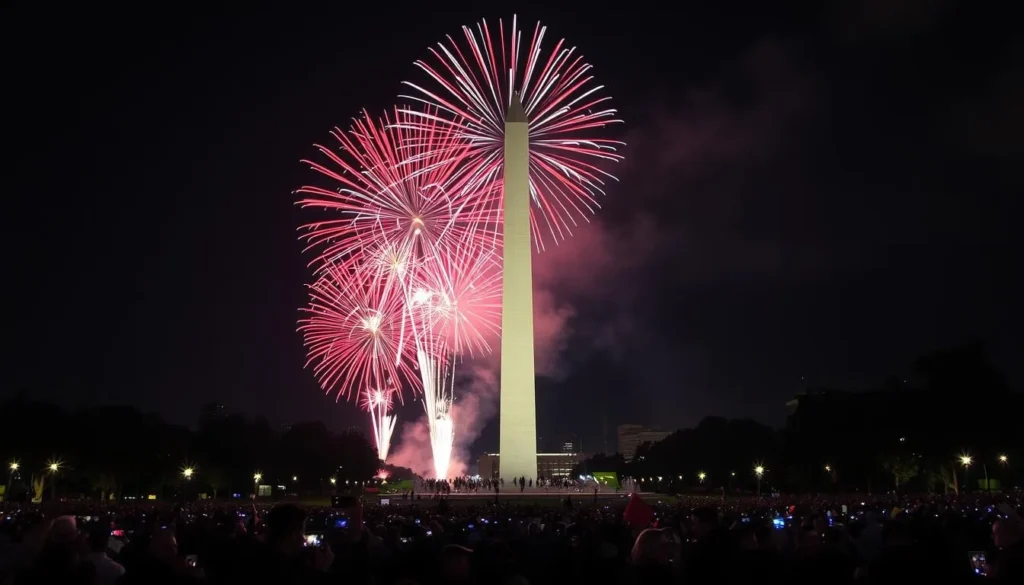
Washington DC hosts numerous special events throughout the year. If your visit coincides with one of these celebrations, consider incorporating it into your itinerary:
Spring
- National Cherry Blossom Festival (late March-early April) – Celebrates the blooming of the cherry trees with parades, performances, and special events
- Passport DC (May) – Embassies open their doors to showcase their countries’ cultures, cuisine, and traditions
- Rolling Thunder Motorcycle Rally (Memorial Day weekend) – Thousands of motorcyclists honor military veterans
Summer
- Capital Pride (June) – LGBTQ+ celebration featuring a parade, festival, and concerts
- Smithsonian Folklife Festival (late June-early July) – Cultural festival on the National Mall
- Independence Day (July 4) – Spectacular fireworks, National Independence Day Parade, and A Capitol Fourth concert
Fall
- H Street Festival (September) – Celebrates the diverse H Street corridor with music, food, and arts
- National Book Festival (September) – Literary event featuring author talks and book signings
- Marine Corps Marathon (October) – One of the largest marathons in the US
Winter
- ZooLights (November-January) – National Zoo illuminated with holiday light displays
- National Christmas Tree Lighting (December) – Official lighting ceremony near the White House
- Chinese New Year Parade (January/February) – Colorful celebration in Chinatown
Final Thoughts on Your Washington DC 3-Day Itinerary
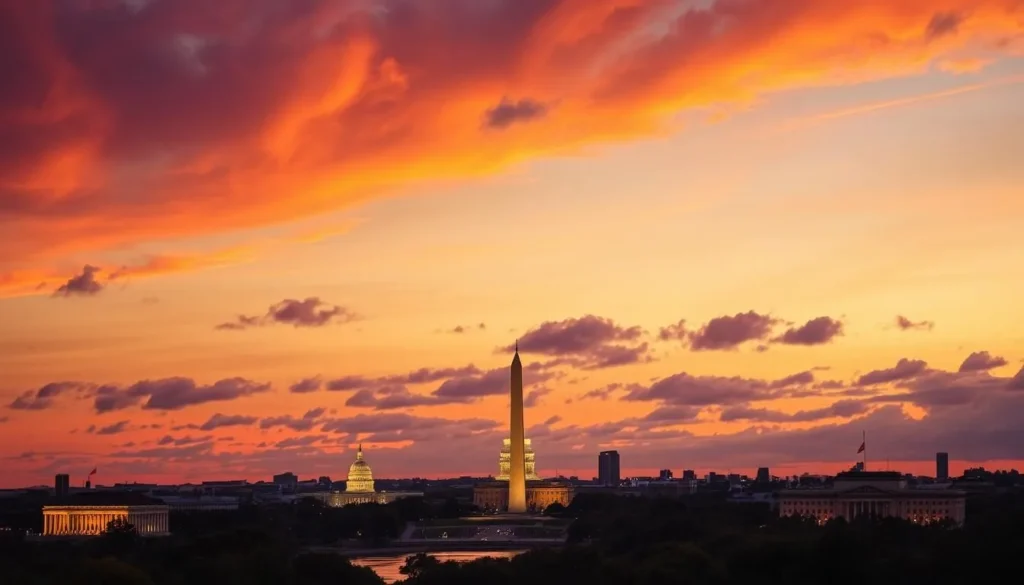
Three days in Washington DC offers just enough time to experience the city’s highlights while leaving you eager to return. From standing in the shadow of Lincoln’s memorial to witnessing the Changing of the Guard at Arlington, from exploring world-class museums to discovering vibrant neighborhoods, the nation’s capital delivers an unparalleled blend of history, culture, and beauty.
As you plan your Washington DC 3-day itinerary, remember that flexibility is key. Weather, special events, or unexpected opportunities may prompt you to adjust your plans. The itinerary outlined here provides a balanced framework, but don’t hesitate to customize it based on your specific interests and pace.
Whether you’re walking in the footsteps of presidents, contemplating the sacrifices of those who served our nation, or simply enjoying the beauty of this meticulously planned city, Washington DC offers experiences that will remain with you long after you return home. The city’s grand monuments, diverse neighborhoods, and cultural treasures invite you to not just observe American history, but to feel genuinely connected to it.
Ready to Experience Washington DC?
Book your complete trip now and prepare for an unforgettable journey through America’s capital city.
